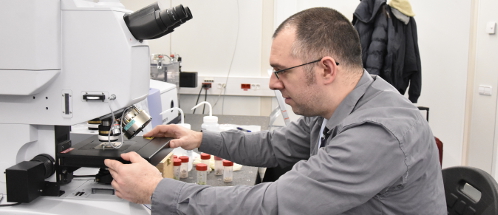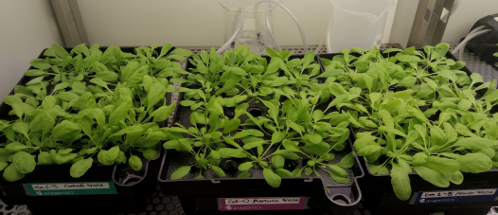14/03/17 In the last decades, the problems derived from water and soil pollution by toxic metals have become a major threat to the ecosystems. Researchers from the Advanced Laboratory of Plant Physiology, in the Biology Department of the UAM Sciences Faculty, are analysing the bonds established between mercury and biothiols - organic compounds present in plants with –SH groups (one sulphur and one hydrogen atom). Biothiols such as glutathione (GSH) and phytochelatins (PCs) are known to improve plants tolerance against toxic metals like mercury by bounding to the metal and ”trapping” it preventing its harmful effects inside the cells.
Using FTIR (Fourier Transform Infrared) spectrometry available in the MIRAS beamline, they want to identify and characterise the biothiol-mercury bonds present in root cells of two plant species: Medicago sativa (alfalfa) and Arabidopsis thaliana (a model research plant). Previously, the plants were grown with different mercury concentrations and sections of root cells were cut and dehydrated. Synchrotron light helps to obtain complete information and identify the different kinds of mercury bonds (with GSH, with different PCs...). It is of great importance to know which the mercury accumulation associated to GSH is because it is not only a precursor of the PCs synthesis, but it also has a key role in restricting the oxidative stress induced by this toxic metal. All these roles contribute to mercury tolerance on plants.

Fig. Ángel Barón, one of the scientists of the project, preparing the plant samples to be observed under the infrared microscope (left). Hydroponic crops of Arabidopsis thaliana plants exposed to mercury stress (right).
It is also necessary to use mutants of Arabidopsis plants that cannot synthesize PCs or have reduced GSH levels, in order to compare them with normal plants and to know the relevance of these biothiols in mercury tolerance. Such studies will reveal the mechanisms involved in mercury transportation to edible tissues (leaves, stems, seeds, etc.), which may pose a risk to potential consumers of mercury contaminated plant products.
To sum up, the study of the synthesis route of biothiols and their role as ligands of toxic metals could be used to detect if a plant has been exposed to mercury pollution. This may also open doors to biotechnological applications in phytoremediation, selecting or enhancing the ability of plants to concentrate metals potentially hazardous to human health in non-edible organs, such as roots of forage plants like alfalfa, and in the same time, avoiding the symptoms of toxicity that these plants may suffer.
This study, which is part of the project “Biothiols Metabolism Contribution in the Distribution and Accumulation of Toxic Metal(loid)s in Crop Plants”, is funded by the Ministry of Economy, Industry and Competitiveness (Spanish Government).




